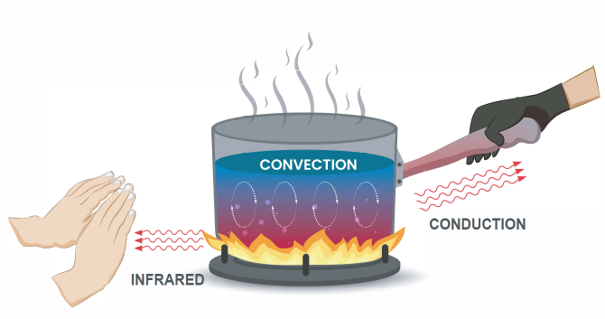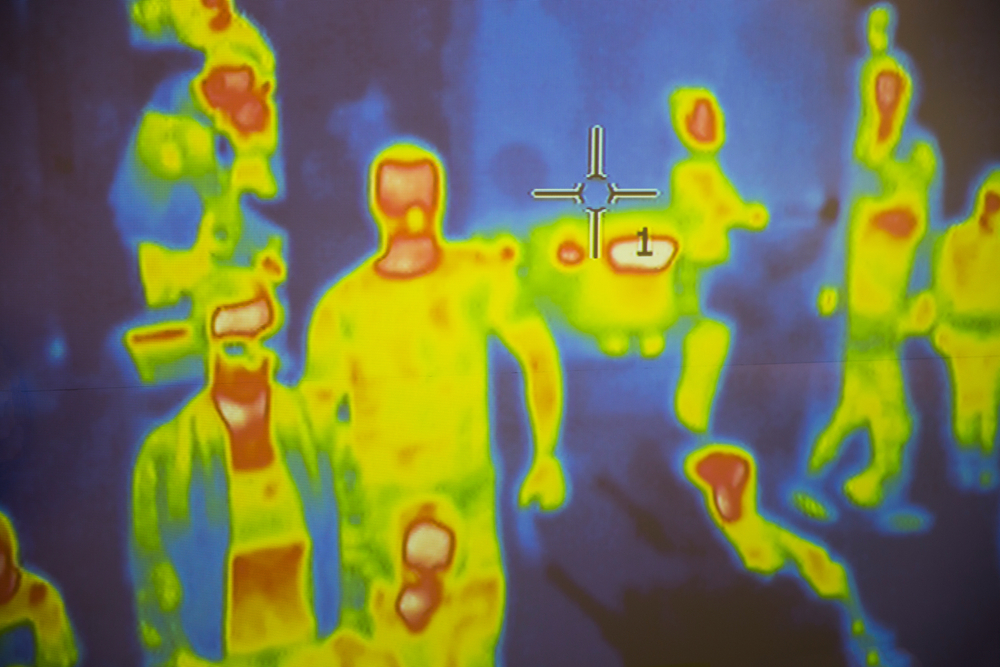Three ways to transmit heat energy
As a backgrounder, there are three main ways to transmit heat energy. The easiest to understand is conduction – if we touch a hot object, like a metal handle of a saucepan – we directly feel its high temperature because energy has been ‘conducted’ straight to our fingers.
The second route, which is the most common way of heating a home, is convection: a hot object (e.g. a radiator) warms the air right next to it; the warm and less dense air rises and circulates around the room. In a similar way, warm water circulates from the bottom of a saucepan to the top.
The third is infrared: it’s emitted by every hot object, passes straight through the air, and heats other objects directly, on a line-of-sight basis. It’s what we feel on our skin when we step out of the shade and into the sun’s light.

Everything – and everyone – emits far infrared
Infrared is emitted by every object which is above a temperature of absolute zero (-273oC) – and since everything on earth is warmer than that, every object in our world, living or not, emits infrared energy.
The amount and type of infrared energy emitted depends on the temperature of the object and how big a surface area it has. Hot items emit a greater quantity of higher energy infrared, and cooler items emit lower quantities of lower energy infrared. We call this lower energy infrared ‘far infrared’ because it is far away from the higher energy levels that are associated with visible light. NexGen uses this lower energy, far infrared.
As an aside, we humans constantly emit infrared: each human emits around 100W of infrared – enough energy to power a typical TV.

NexGen gently provides enough infrared for comfort warmth
NexGen products warm up gently to only 40-50oC, so deliver low quantities of low energy infrared. However, because NexGen products generally cover the whole ceiling of a room, their surface area is very large, so the total amount of energy delivered is enough to keep a room warm.
This is the key to delivering a comfort warmth across a whole room: NexGen feels like a very gentle warmth on the skin, as if from sunshine passing through thin clouds.

Next section:

